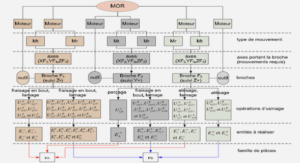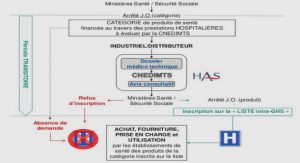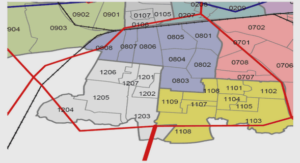Public Safety Networks
Main aspects of Public Safety Networks
The characteristics and requirements of Public Safety Networks may vary considerably depending on their purpose and placement. However, they are always mission critical; once deployed, PSNs have to be reliable since lives may depend on them. As an example, reports from September 11th point out that communications failures contributed directly to the loss of at least 300 reghters and prevented good management of the rescue eorts which contributed to the loss of many other lives, [4] [74]. Moreover, communication failures were one of the obstacles in the coordination of the rescue resources in the 1995 Kobe earthquake [72]. These failures further prevented outsiders from receiving timely information about the severity of the damages. The communication breakdowns delayed the relief eorts which could have prevented the loss of numerous human lives. Reliability of equipments and protocols is a serious matter for any type of network, but it is even more important in the context of PSNs. Maintaining communication capabilities in a disaster scenario is a crucial factor for avoiding preventable loss of lives and damages to property [104]. During a catastrophe such as an earthquake, power outage or ooding, the main wireless network structure can be severely aected and historically, major disasters are the most intense generators of telecommunications trac [104]. The public communication networks, even when available, may fail not only because of physical damages, but also as a result of trac overload. Therefore, the regular public networks alone are often not sucient to allow rescue and relief operations [104]. However, equipment failures and lack of connectivity are not the only problems faced in PSNs. Traditionally, PSNs have been owned and operated by individual agencies, such as law enforcement, civil defense and reghters. Furthermore, they may belong and obey to commands related to federal, state or municipal governments. All these dierent PSNs are often not interoperable, which may represent a problem in the case of a catastrophe [10]. During the last few years some initiatives, such as MESA [76], have tried to solve the problem of interconnectivity among dierent agencies.
Emergency management phases
Disasters can be of dierent types: natural disasters, such as hurricanes, oods, drought, earthquakes and epidemics, or man-made disasters, such as industrial and nuclear accidents, maritime accidents, terrorist attacks. In both cases, human lives are in danger and the telecommunication infrastructures may be seriously aected or even no longer operational. Disaster management involves three main phases: 1. Preparedness, at this phase all the equipment and people should be ready to enter in action, if needed. It consists of training, equipment maintenance, hazards detection and education. 2. Crisis, this phases goes from the break-out point (decision to respond), to the immediate disaster aftermath, when lives can still be saved. Crisis is understood as the society’s response to an imminent disaster; it is dierent from the disaster itself. 3. Return to normal situation, this phase consists of the building and maintenance of temporary communication mechanisms/structures while the regular mechanisms are being repaired or rebuild.
Crisis parties
In a situation of crisis the involved parties can be classied in the following way, taking also into account the degree of mobility they need: 14 Chapter 2 Public Safety Networks • Local Authority(ies); xed: the group in the administrative hierarchy competent to launch a warning to the population and to the Intervention Teams. • Citizens; either mobile or xed: nonprofessional people involved in the crisis. • Intervention Teams; mobile: professionals (civil servants or militaries) in charge of rescuing Citizens in danger, preventing hazard extension or any time-critical mission just after the break-out of the crisis; in charge of caring for injured people once the crisis is over. • Risk Management Centre; xed: group of experts and managers in charge of supervising operations. The Risk Management Centre works in close cooperation with Local Authorities. • Health Centers; xed: infrastructure (e.g. hospital) dedicated to caring injured citizen and backing intervention teams as for this aspect of their mission.
Alert phase
It is important to manage properly this critical phase as it is the moment where a quick response is the most ecient in terms of lives and goods saved. This means notifying professionals and people of the incoming hazard. Warning makes sense if there is a delay between the very break-out of the hazard and the damages it could cause. This leaves time for people to escape and avoid the endangered area. Warning the population is typically the Local Authorities responsibility since they are the only ones who can clearly appreciate the danger depending on local circumstances. Deciding that the situation is critical may be taken at governmental, national level. This is the case for example for earthquakes in all European countries.
Crisis handling phase Coordination of Intervention
Teams begins when the crisis breaks out. The Local Authorities alert them just before the population and then transfer the supervision to the Risk Management Centre. Later on, Intervention Teams still receive instructions from their Local Authorities, from the Risk Management Centre and from the Health Centre. Intervention Teams send back information to Local authorities, to the Risk Management Centre, to Health Centers about the situation and request 2.4 Important factors for Public Safety Networks 15 for help. They typically use a specic purpose network deployed specially to attend to the needs of that particular event. Normally the same network is used for receiving instructions and returning feedback.






